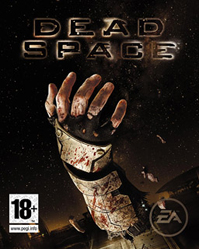This article is more than 1 year old
How Dead Space got EA's groove back
The long road to a greenlight
GDC 09 If the alien infestation in EA's Dead Space didn't scare you, maybe the mega-publisher's sudden, uncharacteristic willingness to tackle new IP did.

Forget necromorphs, the real danger in the stricken mining space ship USG Ishimura was an EA suit lying in wait to turn the game into something like Lord of the Rings: Gandalf's Revenge or Harry Potter: Fist-fighting Champions.
Speaking at the Game Developers Conference today, Dead Space's senior producer Chuck Beaver described the game's seat-of-the-pants development cycle. Certainly, being on the cusp of EA's transformation process wasn't easy — in fact, the game didn't get a greenlight from EA execs until one and a half years of development.
Beaver described the project being kept alive by a "aggressive, obnoxious, internal PR campaign," which included "things we probably shouldn't have done" including hanging Dead Space posters at events for other games and generally treating the game like it was already OK'd.
In reality, when executive producer Glen Schofield pitched the IP, he was budgeted for only three months. After that, the game received what Beaver called a "stay of execution" by showing off bite-sized servings of the game every six months.
Tackling new IP was pretty foreign for EA's Redwood Shores Studio as well. The developers there hadn't got their hands on a new IP since Road Rash was released in 1991.
But life on a string turned out to be a blessing in disguise for the team. Beaver said needing to put ideas into code ASAP forces early answers for audio, mission structure, UI and tuning — all elements he warns are often left until it's too late get the right amount of polish.
"'Plans' are worthless. 'Planning' is priceless," he said. "We became quickly aware that the design document is less important than the ideas."
Beaver said the idea for Dead Space was originally pitched as "Rancid Moon," a game which would have involved fighting through a moon colony full of escaped criminals. (As an Easter egg, "Rancid Moon" movie posters can be found in the completed game). But the folks on Schofield's team hated the prison idea, and they moved on to something a bit more Event Horizon.
Beaver didn't hesitate to admit the game used existing survival-horror games like Resident Evil 4 as a template for what to do with game mechanics like camera control and creating a weapons arsenal for the player.
"They're like a giant present with a bow on it," he said. He urged developers to "fearlessly use standardized features" for a genre and instead concentrate on about five new ways to innovate. In Dead Space's case, it was touches like the game's "HUD-less" design where things like the a health bar and ammo-counter were put on the character himself to help add to immersion.
Beaver's advice for scaring the pants of people in a game:
1) Know the genre: Survival-horror game isn't a high testosterone, alpha-male fantasy fulfillment. The main character should be a regular person surviving extraordinary circumstances. That means the character is just like you, maybe weaker.
2) Dread: "Boo!" scares are cheap, easy to do, but wear out instantly. Instead focus on a sense of dread, which requires more design, planning, and talent.
3) Believability: A player needs a sense of personal association with the character along with events and settings they can relate to. When doing something science-fiction heavy like Dead Space, the team decided to stay away from "magic" science like teleportation and tried to stick to more readily-believable technology. ®
